Buried past: The communities lost to sand
- Published
This year marks 320 years since a stretch of the Moray Firth coast at Culbin, near Nairn, was abandoned following a huge sandstorm.
Called the Great Sand Drift of 1694, the destructive natural event forced people from their homes and farms and transformed a once fertile, grain-growing area into a desert.
In its immediate aftermath, some locals believed the land had been cursed.
Today, much of the area is forestry criss-crossed by public footpaths and cycle ways.

In the distant past, Culbin was known as the Granary of Moray, where several farms and crofts produced grain crops for the local and wider area.
There was also a handful of small fishing communities on the coast, including the original site of the village of Findhorn.
Much of the land was controlled by the Barony of Moray. The laird at the time of the Great Sand Drift was Alexander Kinnaird.
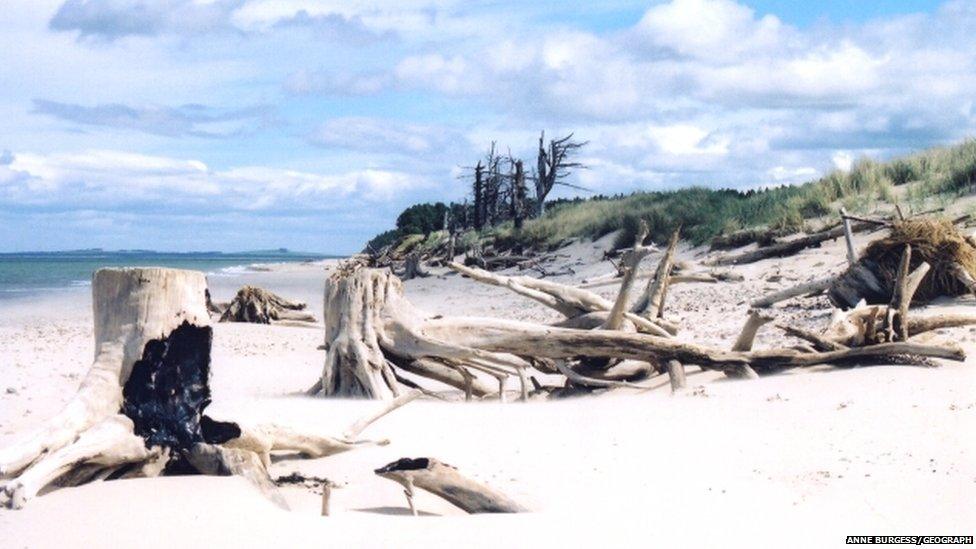
According to folklore, 16 farms and the laird's big house were engulfed by wind-blown sand in a single night.
However, historians suggest sand dunes in the area had been shifting since the year 1100, before the most damaging events came between 1670 and 1695.
The worst of the sandstorms occurred during a period of extreme weather dubbed the Little Ice Age. It lasted 70 years from 1645 to 1715 and featured The Great Frost, which froze the River Thames in London for days.
Brian Fagan, in his recent book The Little Ice Age: How Climate Made History 1300-1850, wrote of Culbin's laird, Kinnaird, becoming a pauper in a matter of hours of the 1694 storm happening and of him appealing to the Scottish Parliament for tax relief.
The laird's home was among the properties said to have been buried under drifts of sand.

One of the causes of the storms was the removal of marram grass. For years, it had kept the long and wide stretch of sands from shifting, but it was ripped up for use thatching roofs and as fuel for heating.

By the late 1690s, there was little of the grass left to stop sand dunes from moving and covering the land at Culbin.
A John Martin, of Elgin, wrote of the Great Sand Drift at the time: "The wind comes rushing down through the openings between the hills, carrying with it immense torrents of sand with a force and violence almost overpowering.
"Clouds of dust are raised from the tops of the mounds and are whirled about in the wildest confusion and fall with the force of hail.
"Nothing can be seen but sand above, sand below and sand everywhere. You dare not open your eyes but must grope your way about as if blindfolded."
In the more superstitious times of the 17th Century, some people were convinced supernatural forces were behind the great drift.
The laird himself blamed a witches' curse for the loss of his estate.
And there was precedent for such a belief.
Thirty-two years earlier, Isobel Gowdie, a woman living in nearby Auldearn, had been suspected of witchcraft.
Over the course of a six-week trial, she gave a vivid and detailed account of making a pact with the devil.
She said the devil foretold that a farm at Culbin would be smothered by sand.
Gowdie also told of being part of a witches coven that she shot arrows made by elves and had feasted with the king and queen of fairies.
It has been suggested that she made up the stories, telling the trial what it wanted to hear, to spare herself from a more violent interrogation.
Following her trial, Gowdie is believed to have been strangled and then burned at the stake.
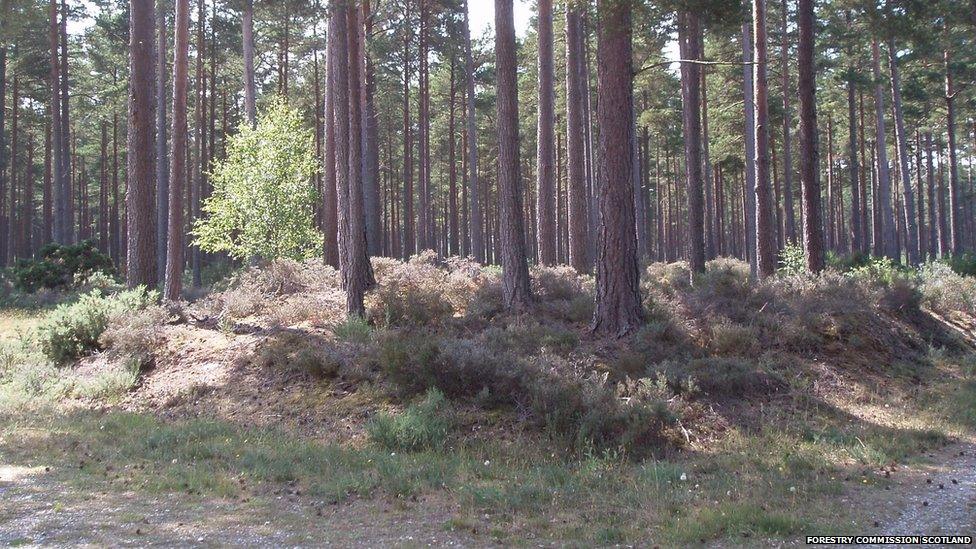
Today, the ruined estate and its farms and croft houses remain buried under sand planted with trees.
The first trees, Scots pine, were planted in the 1850s.
Between 1922 and 1931, the Forestry Commission took over Culbin and increased the level of tree planting.
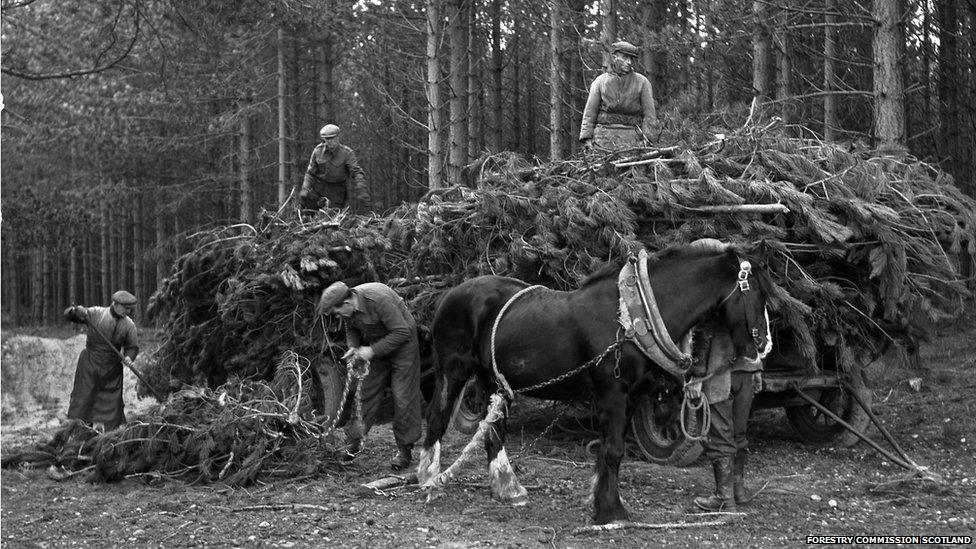
The Forestry Commission's early attempts at forestry at Culbin were not always successful.
Sand buried seedlings, or they were whisked out of the ground by the wind.
Marram grass was replanted in advance of the trees to help stabilise the sand and, by the 1950s, when horses were still used to carry out heavy timber work, there was a well-established forest at Culbin.
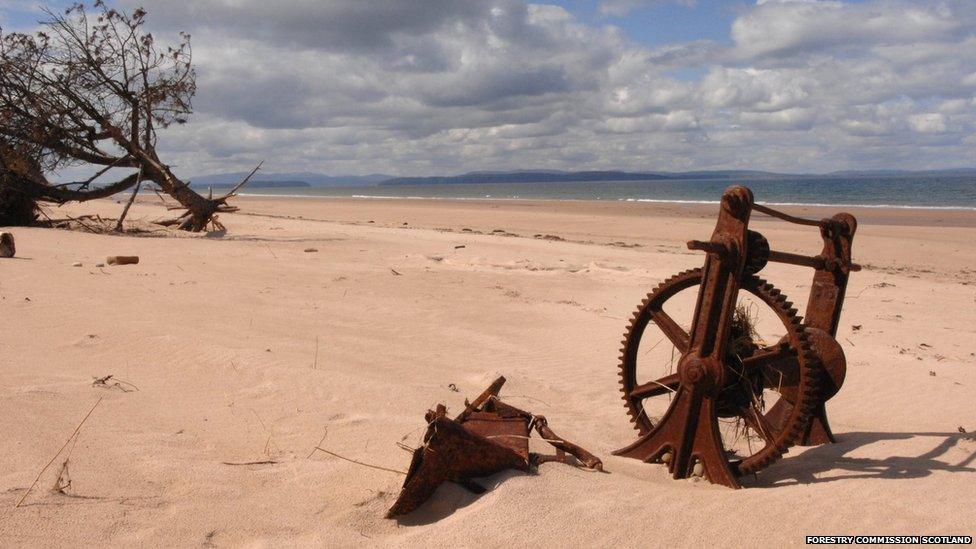
While evidence of the area's lost communities is hidden from view, relics of other past human activity can be found.
An old winch lies partially buried and rusting on the shore where, at a place called The Gut, there are also lines tall, rotting wooden posts.
The poles were erected as a defence against the threat of gliders carrying German soldiers from landing on the flat expanse of sand and mud during World War II.
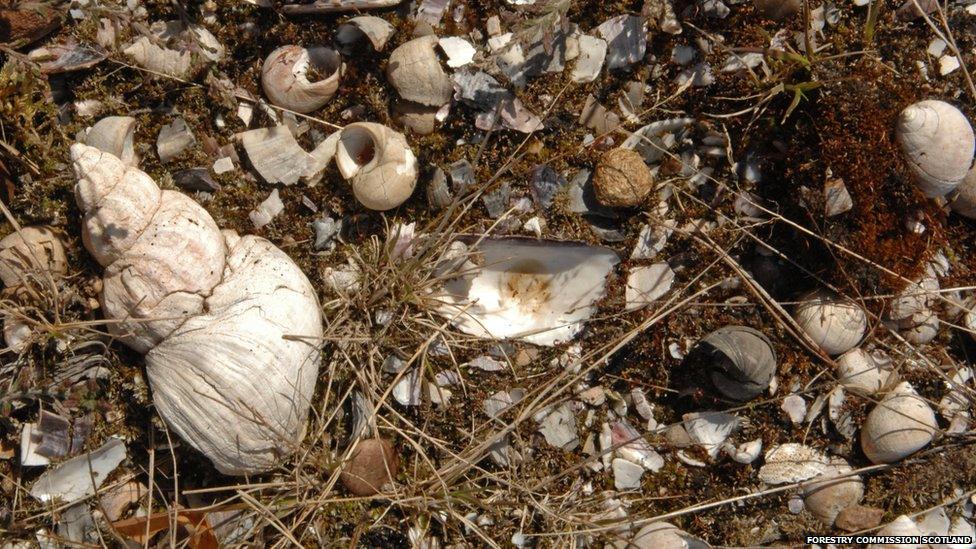
Away from the shoreline, back inside the forest, archaeologists have recorded shell middens and found ancient flints from when the area was occupied during Neolithic times.
Sources: Forestry Commission Scotland, Moray Firth Partnership and Highland Historic Environment Record.